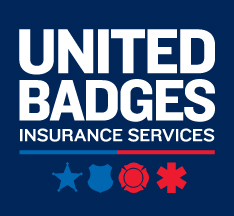- Home
- Foundation
- Sections
- EMS Section
- Emergency Vehicle Technicians Section
- Executive Leadership Development Section
- Search and Rescue Section (FASAR)
- Fire Rescue Cadets Section
- Fire Prevention and Risk Reduction Section
- Hazmat Responders Section
- Honor Guard Section
- Training and Education Section
- Public Information Officers Section
- Florida Combination and Volunteer Fire Officers Section
- Safety & Health Section
- Section and Committee Policy - Description and By-Laws
- Committees
- Legislative
- Events
- Resources
- Join Today
- FFCA Connect
Model Response Guidance to Active Shooter Hostile Event (ASHE)The Florida Fire Chiefs Association (FFCA) Domestic Security Resource Committee (DSRC) has recently formed an Active Shooter (Assailant) Committee a sub-committee of the DSRC. I have been appointed the Chair and Chief Otto Drozd from Orange County Fire Rescue is the Board of Director liaison. I have been directed to have the work group review the 2 attached documents, I have attached the pre-hospital MCI/Active Shooter (Assailant) Procedure that several of us have been working on, as well as the FFCA draft model response guidance to active shooter hostile events. Please provide feedback on the documents and share any other documents you have that may be helpful for the group. Thank you, I look forward to working with you.
In addition, below are just some of the many resources that already exist to help guide those agencies/facilities who have decided to pursue a more prepared community through integrated response. (just click control and the link). Active Shooter and Complex Attack Resources - Source: DHS Office of Health Affairs As recent events so tragically demonstrate, we continue to face ongoing threats in an uncertain world. Active shooter events, the use of improvised explosive devices (IEDs), and the threat of complex coordinated attacks must be considered as at least plausible, if not probable. A pre-planned, integrated response by all first responder disciplines is required in order to maximize effectiveness and improve the survivability of those injured in such attacks. Some of the considered actions may seem contrary to those responders indoctrinated in the time-honored doctrine of “scene safety trumps all.” The truth is that the first responder community now has decades of response and trauma data to be used as the foundation for evidence-based best practices. Many communities have already established integrated response programs, and there is no reason for any jurisdiction to “reinvent the wheel” from scratch. While there is no “one-size fits all” solution to the challenge of integrated response, there are already model communities of different sizes and compositions. From rural to urban, volunteer to paid, and everything in between – somewhere, in a system a lot like yours, someone has already done much of the ground work. And the benefits of integrated response extend well beyond those realized during the rare terror attack. Relationships between police, fire, and EMS agencies that are formed (and enhanced) during pre-planning and training will pay great dividends during all requests for service from routine calls to natural disasters.
MCI/Active Shooter Hostile Event Pre-hospital MCI/Active Shooter/Hostile Event Response Procedures MCI Fog State Generic Procedure Form
Training for Complex Coordinated Attacks E912: Preparing Communities for a Complex Coordinated Attack – IEMC: Community Specific
Integrated response (culture change): A Study of Active Shooter Incidents in the United States Between 2000 and 2013 Active Shooter Study: Quick Reference Guide
Hemorrhage Control (Early care saves lives)
Prevailing Response Models and Concepts: Advanced Law Enforcement Rapid Response Training Committee on Tactical Emergency Casualty Care
Bystander Preparedness and Response: Bleeding Control for the Injured (B-Con)
Grant opportunities: U.S. Department of Justice Bulletproof Vest Partnership
Other Resources: |

